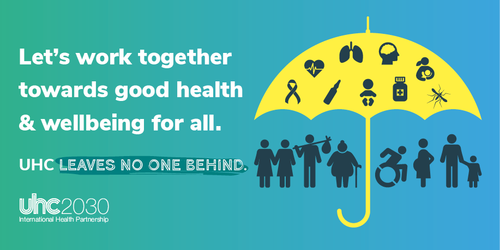UHC2030 is excited to welcome several new and distinguished...
18 December 2018
Advocacy note for International Migration Day 2018- UHC in Fragile settings

Universal Health Coverage (UHC) is Target 3.8 in the Sustainable Development Goals (SDGs) and is rooted in human rights. Everyone is entitled to the health care they need without facing financing hardship.
UHC2030 supports health initiatives on UHC in fragile settings1 because:
- Member States’ commitment to leave no one behind in the 2030 Agenda for Sustainable Development cannot be achieved without more attention to fragile settings. More than 1.6 billion people – 22% of the global population – live in fragile settings, and 85% of the world’s extreme poor – including vulnerable populations such as forced migrants, refugees, internally displaced persons (IDPs) and stateless people – are concentrated in these locations.
- Maintaining and advancing towards the health-related SDG targets in fragile and conflict-affected settings will require increased investment estimated at USD 43 billion, with a gap of at least USD 26 billion each year. Increased flexibility across humanitarian and development health financing, and multiyear predictable co-financing from development partners are essential to enable both rapid response and system strengthening given the fluid nature of protracted emergencies.
- Attacks on health care facilities and medical and humanitarian personnel violate International Humanitarian Law as articulated in the UN Security Council Resolution 2286 (2016), and must be brought to an end. Ensuring the protection of health care facilities, assets and medical workers will allow for continued and uninterrupted access to healthcare as well as safeguarding long-term investments in health care.
We call on all health advocates to adopt political messages around UHC in fragile settings. This will help reduce fragmentation and competition among health initiatives and encourage unified action.
We advocate on Primary Health Care (PHC):
- Policies and programmes implemented during crises have a lasting legacy. It will be beneficial to “use crises well,” focusing on the medium-term, socio-economic dimension of the crisis would help vulnerable populations, from the forcibly displaced, to migrants, to their host communities. This development lens is distinct from but complementary to the humanitarian agenda, considering conditions of life, social determinants of health and enabling environments.
- A primary health care (PHC) approach remains essential in fragile and conflict-affected settings. Reaching the last mile with essential health services and improving quality and efficiency of frontline services require community participation and flexible and innovative service delivery models, including engagement of non-government providers and use of technology to respond to health needs of people across the life course and in changing circumstances beyond national boundaries. Community resilience would serve as the foundation for PHC towards UHC in fragile and conflict-affected settings.
- Guiding principles for health financing reform2 still apply in fragile settings, yet the feasibility and priority vary in each context. In an acute crisis, mitigating financial and non-financial barriers for the vulnerable populations to access essential health services is crucial. In a protracted crisis, humanitarian and development actors could aim to pool resources, pool risks and purchase services through such mechanisms where possible, in close cooperation and coordination with governments to ensure alignment and consistency. Over the longer term, domestic resource utilization and mobilisation (DRUM) becomes important and needs to be strategically built into governments’ systems to strengthen governments’ capacity for planning, analysis, stewardship, contracting and multisectoral coordination for DRUM.
UHC2030 has an advocacy guide with a social media toolkit. Join us and spread the word!
Call to Action: Universal Health Coverage in Emergencies
Suggested Tweets:
- The world needs more attention to fragile settings to achieve Member States’ commitments to leaving no one behind. Over 1.6 billion people live and 85% of the world’s extreme poor are increasingly concentrated in fragile settings. #HealthForAll #UHC2030 #leavenoonebehind #fragilestates
- USD 26 billion is required each year to advance towards SDG3 in fragile settings. Increased flexibility across humanitarian and development health funding is essential to enable both rapid response and systems strengthening. #InvestInHealth #UHC2030 #fragilestates
- Attacks on health care facilities and medical and humanitarian personnel violate International Humanitarian Law and must be brought to an end. #NotATarget #UHC2030
[1] Many definitions for fragility exist. The World Bank Group annually defines the harmonized list of fragile situations if a country falls into either the average Country Policy and Institutional Assessment (CPIA) country rating of 3.2 or less, or the presence of the UN and/or regional peacekeeping or peacebuilding mission during the past three years. CPIA is based on a set of criteria in the four clusters of economic management, structural policies, policies for social inclusion and equity, and public sector management and institutions.
[2] These include the importance of compulsory over voluntary funding sources; improved predictability and stability of revenues; redistribution and consolidation of risk pools; strategic purchasing aligning resource allocation with population health needs and provider performance; and an integrated data platform on patient activity.
